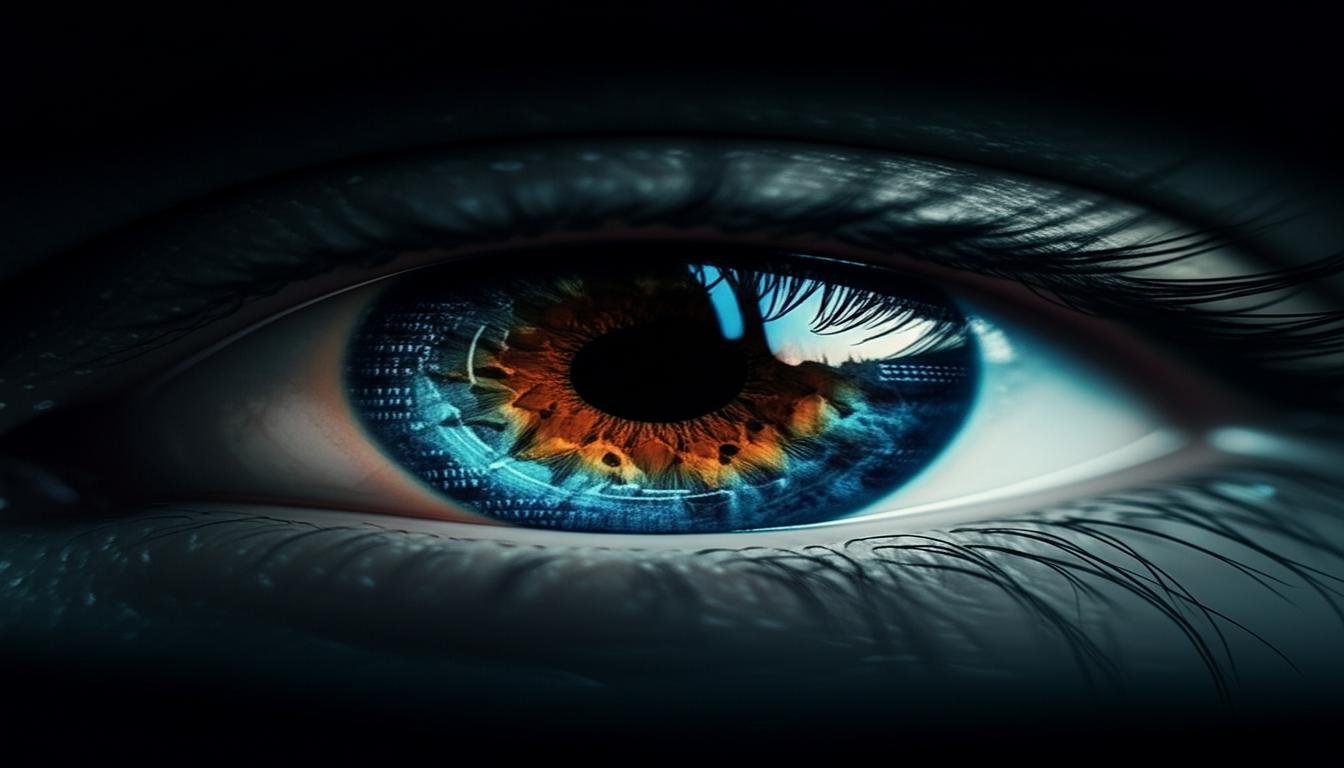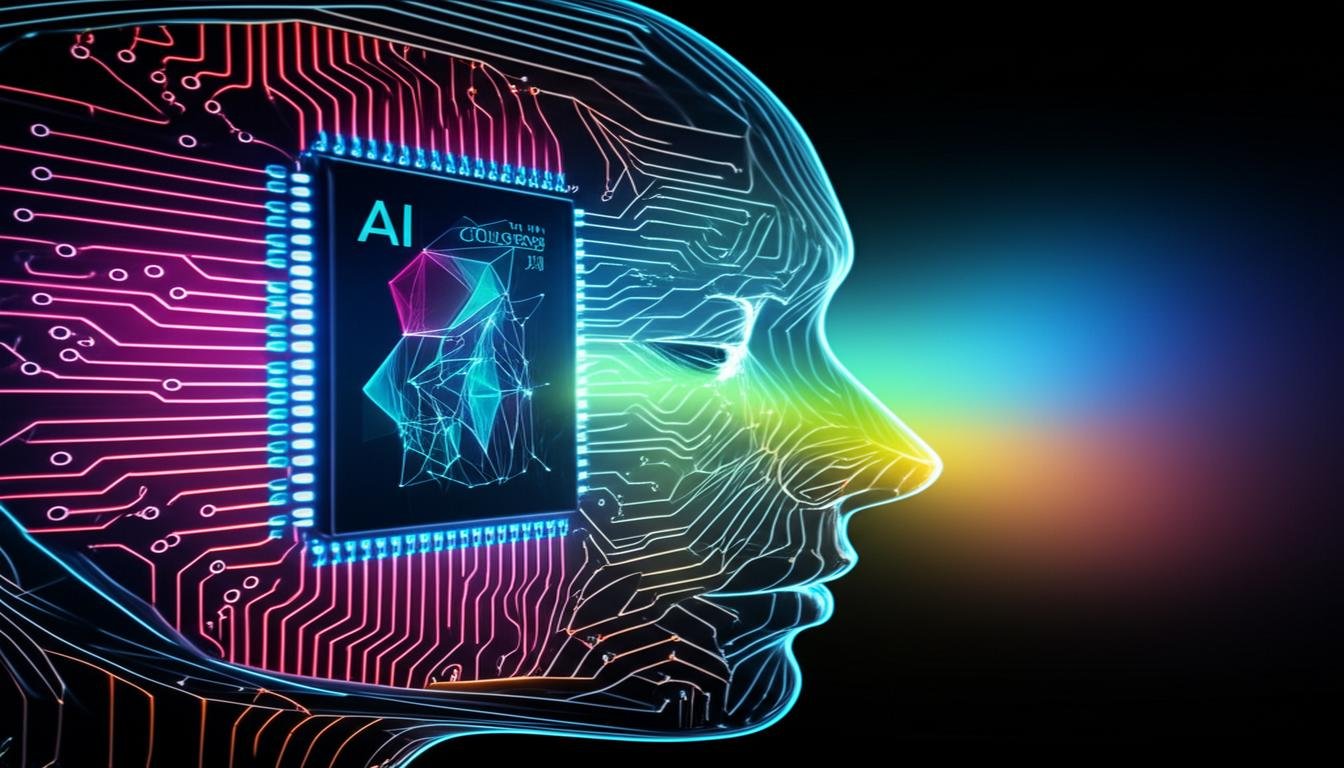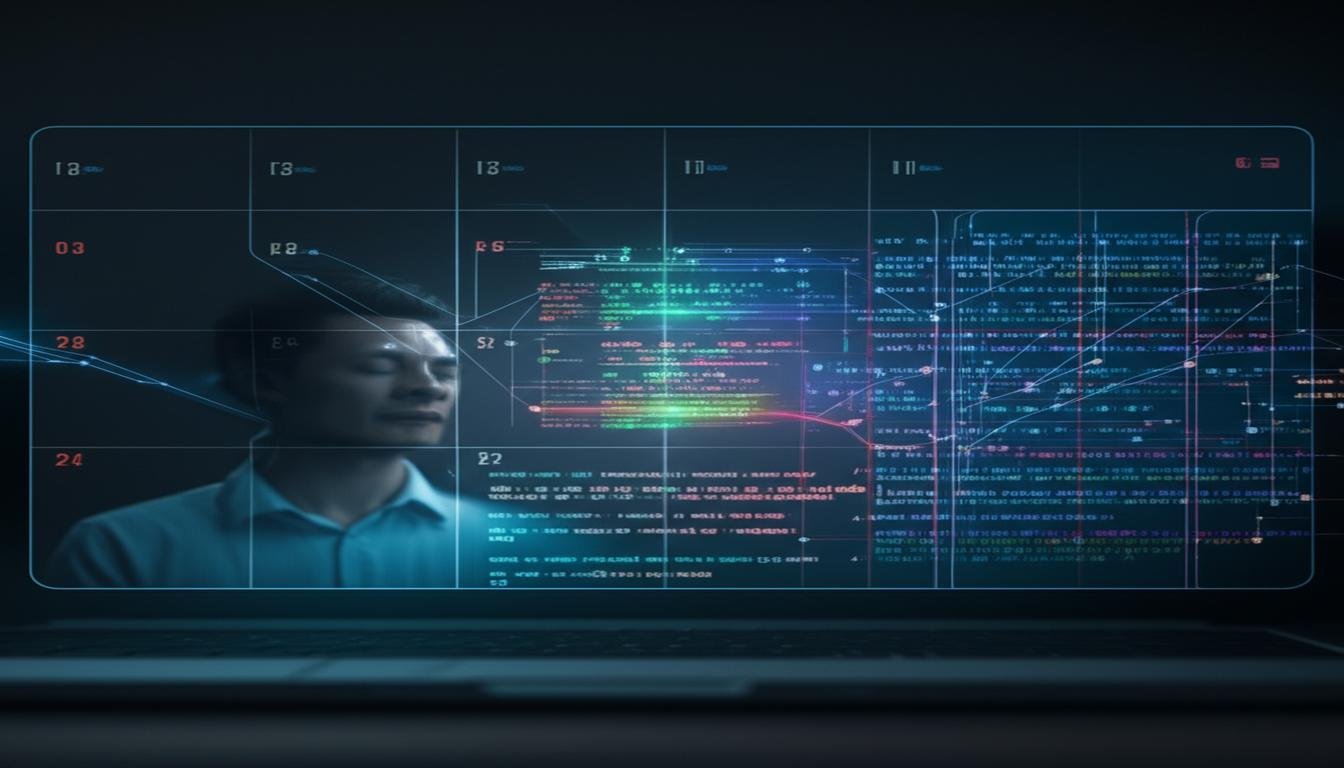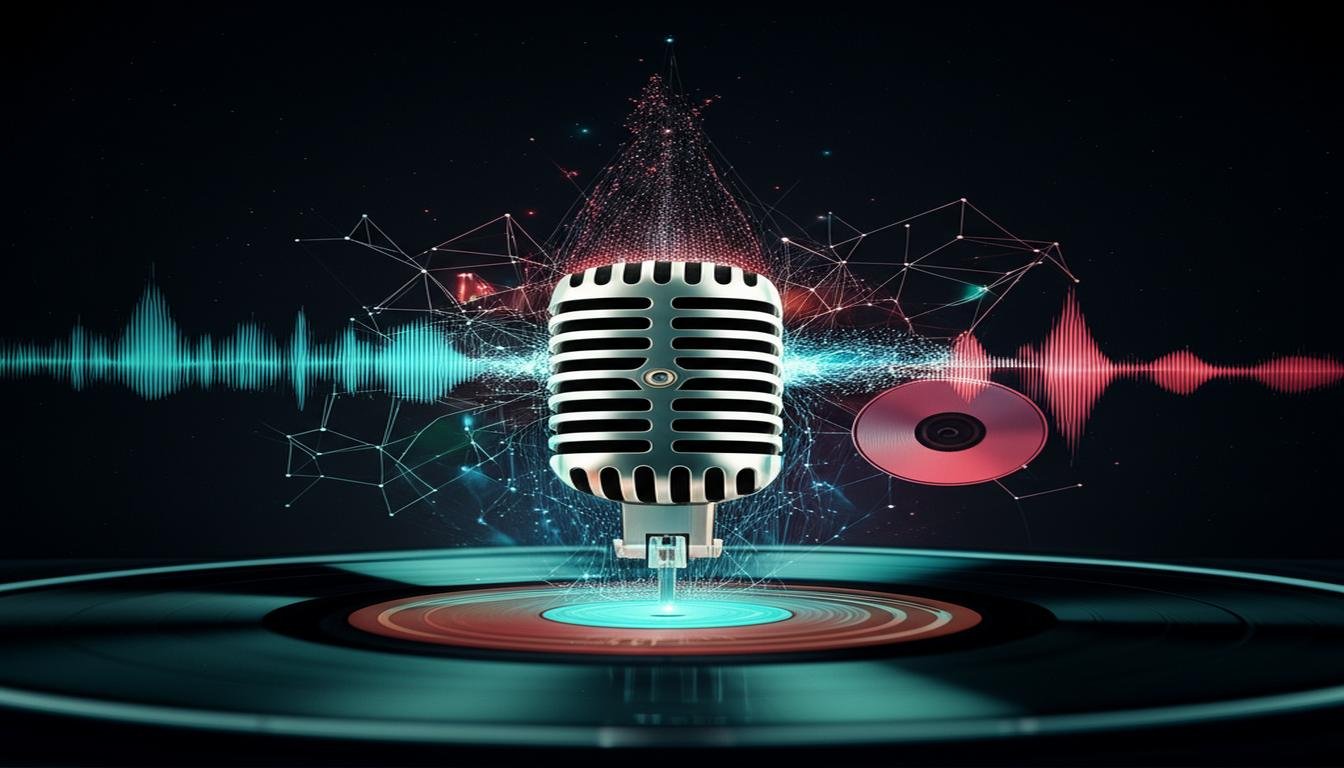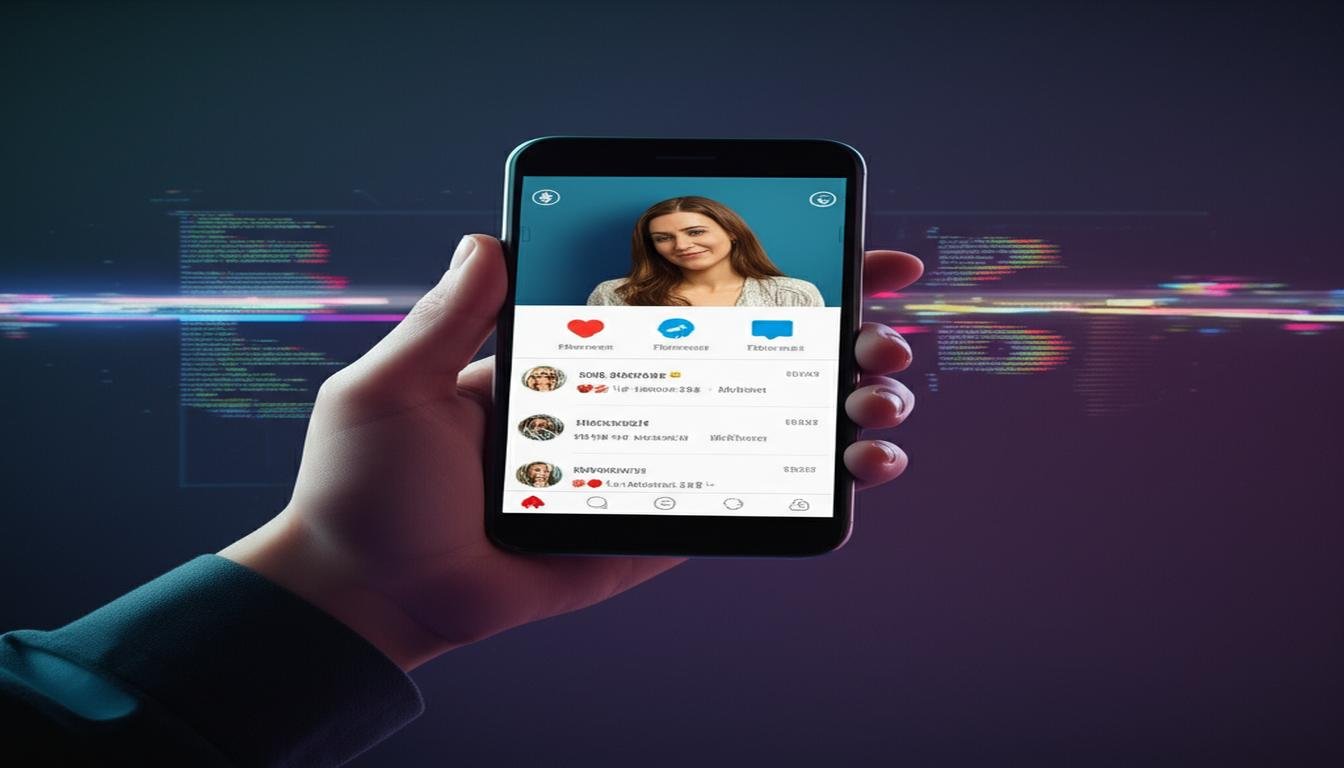Imagine a technology that could change economies, jobs, and daily life in just a decade. That’s what artificial intelligence is doing. It’s moving faster than the internet, smartphones, or electricity did when they first came out. By 2030, the AI market is expected to grow from $150 billion to $1.3 trillion. But why is this innovation so different from past breakthroughs?
AI is not just making tasks easier. It’s solving problems that were once thought impossible. It’s like a collision of data analysis, machine learning, and human creativity. This technology learns and adapts on its own, causing big changes in many industries.
Now, 65% of businesses use AI for customer service, and hospitals use algorithms to find diseases early. It’s not just about making things more efficient. It’s about changing how we work and make decisions. The impact of AI goes beyond money, touching ethics, privacy, and even art.
Key Takeaways
- The AI market could grow nearly 9x by 2030, signaling massive economic shifts.
- Machine learning enables systems to improve without direct human programming.
- Industries like healthcare and transportation are already seeing radical changes.
- Ethical debates around AI transparency and job displacement are intensifying.
- Personalized education and climate modeling showcase AI’s societal impact.
Understanding the AI Phenomenon
Artificial intelligence has changed from science fiction to a key tool in just a few decades. It now shapes how we work, talk, and solve problems. Let’s look at how AI developed and what makes today’s AI technology so different.
The Evolution of Machine Intelligence
The journey started with Alan Turing’s 1950 question: “Can machines think?” His Turing Test set the stage for measuring AI. Key milestones include:
- John McCarthy’s 1958 LISP programming language (used in robotics)
- IBM Deep Blue beating chess champion Garry Kasparov in 1997
- Google DeepMind’s AlphaFold solving protein structures in 2020
Early systems followed strict rules, but today’s AI learns on its own. The move from symbolic AI to deep learning in the 2010s was a big change. Now, developers create neural networks that learn from experience, just like humans do.
Current State of AI Technology
Today’s narrow AI is great at specific tasks thanks to three main AI advancements:
- More powerful processing (5G networks for real-time analysis)
- Big datasets (3.5 billion smartphones for training)
- Better algorithms (transformers for language understanding)
AI is now used in many fields. Tesla’s Autopilot uses 8 cameras to read the road, and GPT-4 writes like a human by analyzing huge amounts of data. But, true artificial general intelligence (AGI) is not yet here – current systems can’t adapt like humans do.
The difference between specialized AI and AGI is driving a lot of research. Companies like OpenAI are working on systems that can learn and apply knowledge across different areas. This progress shows we’re on the verge of a new era in AI.
Why is AI Such a Big Deal?
Artificial intelligence is changing the world in big ways. It’s not just for tech geeks and business leaders anymore. AI is affecting our economy and society in ways we can’t ignore.

Economic Transformation
AI is like a superpower for the economy. PwC says AI could add $15.7 trillion to global GDP by 2030. That’s like adding China’s whole economy to the world’s total.
This growth comes from three main areas:
- Automation of repetitive tasks in manufacturing and logistics
- Enhanced decision-making through predictive analytics in finance
- Personalized customer experiences in retail through machine learning
Some people worry AI will take jobs. But McKinsey says AI could create 7.2 million new roles in healthcare by 2032. Here’s how different sectors are benefiting:
| Sector | AI Impact | Outcome |
|---|---|---|
| Manufacturing | Predictive maintenance | 23% fewer equipment failures |
| Healthcare | Diagnostic algorithms | $100B annual savings (McKinsey) |
| Retail | Demand forecasting | 35% inventory reduction |
Societal Impact Factors
AI is changing society in big ways too. Work patterns have changed a lot – 42% of US workers use AI tools every week. Machine learning helps remote work teams work better, and tools for the blind give them more freedom.
“We’re not replacing humans – we’re evolving job roles. The future of ai lies in human-machine collaboration.”
But there are challenges. Customer service has lost 12% of its workforce to chatbots. The solution is in training programs. Amazon’s $700 million effort shows how to turn job loss into new opportunities.
AI’s Revolutionary Capabilities
Artificial intelligence is changing the game in many fields. It’s not just about following rules like old software did. Today’s AI learns, adapts, and gets better with real-world experiences. Let’s dive into two key areas that make this possible.
Pattern Recognition Mastery
AI is great at finding hidden connections in big data. Netflix’s recommendation engine uses 4,000+ data points per user to guess what you’ll like next. This skill is not just for fun:
| Application | Traditional Approach | AI Solution | Improvement |
|---|---|---|---|
| Medical Imaging | Manual tumor detection | NVIDIA’s Clara AI | 92% accuracy vs 78% human average |
| Fraud Detection | Rule-based systems | Mastercard Decision Intelligence | 300% faster threat identification |
| Supply Chain | Historical forecasting | Amazon Anticipatory Shipping | 40% inventory reduction |
PathAI’s tools show AI’s power in healthcare. They find cancer patterns in tissue samples that humans might miss. This cuts down diagnostic errors by 85% in trials.
Continuous Learning Systems
Today’s AI gets smarter with each experience. Google’s AlphaGo didn’t just win at Go—it came up with entirely new strategies that amazed humans. It learns through three main ways:
- Reinforcement learning: ChatGPT gets better with user feedback
- Transfer learning: Weather models adapt to climate change
- Federated learning: Smartphone keyboards improve without private data
These systems keep getting better. Tesla’s Autopilot uses 4.8 billion miles of data to make driving safer every month. Unlike old code, AI evolves with new experiences.
The importance of AI is clear in these examples. It turns raw data into useful insights. While humans might miss small connections, AI finds trends that lead to new ideas. As AI keeps learning, its ai benefits grow, leading to solutions we couldn’t imagine five years ago.
Industry-Specific Transformations
Artificial intelligence is changing the game in many industries. It’s making big changes in places like hospitals and stock markets. The big question is: why use AI if it’s just for making things more efficient? Let’s look at three areas where AI is making a huge difference.
Healthcare Revolution
The impact of AI in medicine is huge. For example, the da Vinci Surgical Platform helps surgeons make smaller cuts and heal patients faster. They can do complex surgeries with amazing precision.
- 45% smaller incisions compared to traditional methods
- 31% faster patient recovery times
- Sub-millimeter precision in complex procedures
At Johns Hopkins, AI is helping predict sepsis. It looks at 165 data points in seconds, not hours. This has cut down mortality rates by 63% for high-risk patients.
Financial Sector Overhaul
Banks are now using AI to fight fraud. These systems check 2.1 million transactions every second. They catch things humans often miss, reducing false alarms by 72%.
- Scan 2.1 million transactions per second
- Identify suspicious patterns humans typically miss
- Reduce false positives by 72% compared to rule-based systems
Goldman Sachs’ MARATHON platform trades in 0.0003 seconds. It analyzes global markets in seconds, something humans would take 38 hours to do.
“Our fraud detection AI stops $25 million in suspicious transactions daily – that’s equivalent to hiring 800 analysts working round-the-clock.”
Manufacturing Efficiency
Tesla’s Fremont factory shows the power of AI in making things. Their AI helps make cars faster and with fewer defects. It also uses less energy.
| Metric | Pre-AI (2017) | Post-AI (2024) |
|---|---|---|
| Production Speed | 5 cars/hour | 14 cars/hour |
| Defect Rate | 2.1% | 0.4% |
| Energy Consumption | 18 kWh/vehicle | 11 kWh/vehicle |
AI also predicts when machines will break down 14 days early. It checks parts 60 times faster than humans. This saves car makers $4.3 billion a year.
Economic Impacts of AI Adoption
Artificial intelligence is changing economies in big ways. It brings new chances and shakes up old ways of working. AI helps with tasks that need repetition and sparks new ideas, touching all parts of business.
Job Market Transformation
The World Economic Forum says AI will create 97 million new jobs by 2025. But it will also replace 85 million jobs that are routine. This mix means we need to learn new skills:
- Decline in data entry roles (-65% projected)
- 45% growth in AI maintenance specialists
- 32% increase in human-machine collaboration managers
Amazon’s use of robots in warehouses shows this change. Automation cut jobs in sorting, but made new roles in robotics and optimization. Those who learn new skills see 23% higher wages than before.
| Job Category | Projected Change (2020-2025) | Key Drivers |
|---|---|---|
| Manufacturing Technicians | -18% | Automated quality control systems |
| AI Ethics Specialists | +89% | Regulatory requirements |
| Predictive Maintenance Engineers | +67% | IoT sensor proliferation |
Productivity Enhancements
AI tools make work faster and better in many fields. Pharmaceutical companies find drugs 30% quicker with AI. Manufacturers with computer vision have 40% fewer defects.
“Human-AI teams solve complex problems 2.4x faster than either could alone.”
AI boosts business in three main ways:
- It analyzes data in real-time, speeding up decisions
- Predictive maintenance cuts downtime by 55%
- Automated customer service handles 73% of simple questions
These changes don’t just make money. They let workers focus on creative and strategic work. The future is about humans and machines working together, not against each other.
Ethical Considerations in AI Development
AI technology is changing many industries, but it raises big questions about fairness and human rights. We need to look at two main issues: hidden biases in AI systems and the balance between convenience and privacy.
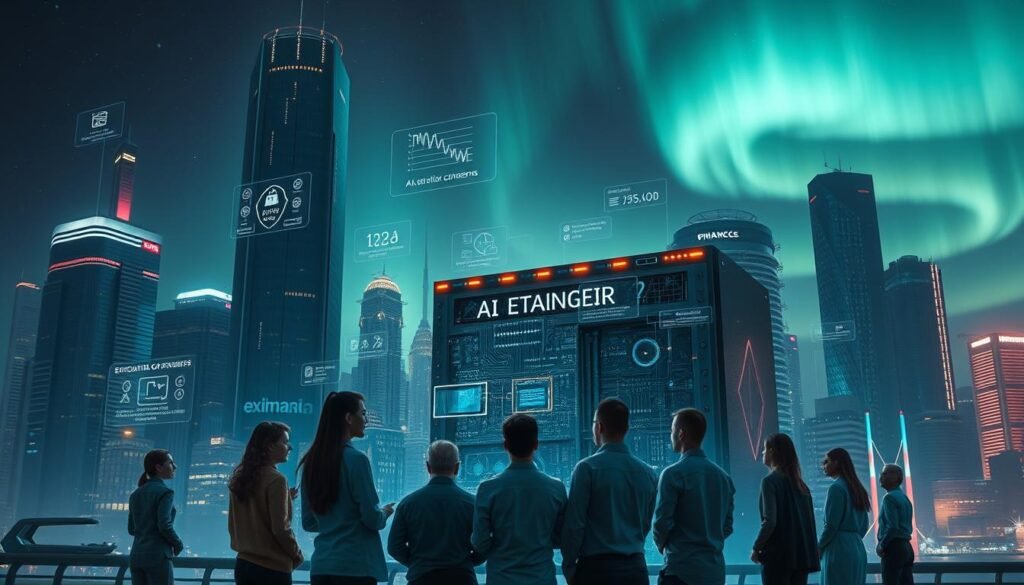
When Algorithms Mirror Human Prejudices
Machine learning systems can reflect and even worsen biases in society. For example, Amazon once had a hiring tool that unfairly judged candidates based on certain words. The COMPAS algorithm also showed racial biases in predicting who would reoffend. This shows that AI doesn’t get rid of bias, it just makes it more systematic.
“We’re not just coding algorithms – we’re encoding values. The real challenge is making those values explicit.”
There are three main reasons for algorithmic bias:
- Historical data that reflects past discrimination
- Lack of diversity in the teams that develop AI
- Not testing AI enough for edge cases
The Privacy Paradox in Smart Systems
Your voice-activated speaker knows what you buy. Your fitness tracker tracks your daily life. These AI technology features are convenient but also collect a lot of personal data. The EU’s AI Act wants to set strict rules, but enforcement worldwide is not consistent.
| Data Type | Common Collection Methods | Regulatory Safeguards |
|---|---|---|
| Biometric Data | Facial recognition cameras | GDPR Article 9 restrictions |
| Location History | Mobile apps & IoT devices | CCPA opt-out requirements |
| Health Metrics | Wearable sensors | HIPAA compliance mandates |
Studies show 68% of smart device users don’t know what data their devices collect. This lack of knowledge creates an imbalance of power between tech companies and users. This is a big reason why AI is such a big deal in privacy discussions.
To balance innovation with ethics, we need:
- Clear data usage policies
- Settings that let users control their data
- Third-party checks on AI algorithms
AI in Daily Life
Artificial intelligence is now a key part of our daily lives. It helps with simple tasks like adjusting your thermostat and making playlists. These tools save us time and learn our habits, making our lives easier.
Smart Home Integration
Your home is getting smarter, thanks to AI. It’s not just about voice-activated lights. For example, the Nest Learning Thermostat learns your temperature preferences and schedule, saving up to 15% on energy.
Robotic vacuums like Roomba use SLAM navigation to map your floors and avoid obstacles. Even your email has an AI upgrade. Gmail’s Smart Compose predicts your next sentence, learning from your writing style.
These systems work behind the scenes to:
- Anticipate needs before you articulate them
- Optimize energy usage patterns
- Maintain appliances proactively
Personalized Services
Streaming platforms like Netflix show the power of AI for personalized experiences. Their recommendation engine suggests shows based on your viewing habits. Amazon uses similar technology to show products based on your browsing and purchases.
Spotify’s Discover Weekly creates a unique playlist every Monday. It compares your listening habits with millions of others. This creates music discoveries that feel personal, even though they’re made by algorithms.
AI benefits go beyond entertainment. Fitness apps adjust workouts based on your progress. Meal kits suggest recipes based on your dietary preferences. AI learns your needs, making daily decisions easier and more efficient.
National Security Implications
Artificial intelligence is changing how countries defend themselves. It brings powerful tools for safety but also raises big ethical questions. As countries use AI, they must decide how to balance safety with human values.

Cybersecurity Applications
Today’s AI can spot cyber threats 100 times faster than humans. Darktrace’s Enterprise Immune System uses learning to find odd network patterns. It stops ransomware attacks early.
The DARPA Cyber Grand Challenge showed AI can fix software bugs on its own. This was seen in live competitions.
Key benefits include:
- Real-time monitoring of critical infrastructure
- Predictive analysis of attack vectors
- Automated response to zero-day exploits
Autonomous Weapons Debate
Turkey’s Kargu-2 drones were used without human control in battles. This has sparked talks at the UN about AI weapons. Some say AI can save lives, but others fear it could lead to:
“Uncontrolled escalation scenarios where machines make life-or-death decisions faster than human oversight allows”
The U.S. Department of Defense has strict rules for AI use. But, 78% of NATO members are testing AI in defense systems, says 2024 data from the Stockholm International Peace Research Institute.
There are big challenges in controlling AI weapons globally:
- Varying national security priorities
- Rapid technological advancement outpacing legislation
- Dual-use applications in civilian and military tech
Environmental Applications
Artificial intelligence is changing how we face environmental problems. It offers smarter solutions to protect our planet. AI helps predict extreme weather and cut down energy waste, showing its importance in fighting climate change.
Climate Modeling Accuracy
Meteorologists now use AI like a high-powered microscope for Earth’s climate systems. Neural networks analyze decades of weather data to predict hurricanes with 30% greater accuracy than old methods. IBM’s Green Horizon project shows AI’s power, making detailed pollution forecasts for cities like Beijing to reduce smog.
These systems don’t just process numbers; they learn atmospheric patterns. During the 2023 Atlantic hurricane season, AI models predicted landfall locations 72 hours earlier than traditional systems. A climate scientist said:
“Machine learning acts as a force multiplier for our existing satellite networks and sensor arrays.”
Energy Optimization
Why use AI when flipping a light switch? It’s changing how power grids work. Google’s data centers cut cooling costs by 40% with machine learning that adjusts temperatures in real-time. The same tech now optimizes renewable energy:
- Wind farms using DeepMind predictions boost output by 20%
- Solar arrays automatically angle panels using weather forecasts
- Smart grids balance supply/demand across entire cities
These AI applications have big impacts. One optimized wind turbine can power 300 homes a year. As energy needs grow, these smart systems help utilities use what they have, without needing new power plants.
Workforce Transformation
The AI revolution is changing jobs fast. While some jobs are lost, new ones are created. Let’s look at how industries are changing and what it means for your career.

Job Displacement Concerns
Automation is changing jobs in many areas. The car industry is a good example:
- Traditional assembly line jobs fell by 17% from 2015 to now
- Jobs for EV technicians jumped by 214% in the same time
This change is part of what Brookings calls the “automation paradox“. Machines take some jobs but also create new ones that need special skills. Customer service is also changing, with chatbots handling simple tasks and humans dealing with more complex issues.
“Successful workforce transitions need strategic reskilling, costing about $4,000 per employee.”
Emerging Career Opportunities
The future of AI is about working with machines. Two areas are growing fast:
- Prompt Engineering ($120K-$180K):
- AWS certifications have seen 300% more students in 2021
- Major tech academies offer 6-month training programs
- AI Ethics Auditing ($90K-$140K):
- Needs training that combines law and tech
- Now, 50+ Fortune 500 companies have ethics teams
These jobs show why AI is popular now. They mix technical skills with human abilities that machines can’t match. Jobs in healthcare AI and robotics maintenance also follow this pattern.
For those looking to change careers, here are three paths:
- Corporate reskilling programs (70% of tech firms use them)
- Microcredentials from community colleges (usually 12 weeks)
- Free AI certification platforms (with open-source options)
Healthcare Breakthroughs
Artificial intelligence is changing medical care in big ways. It helps make faster diagnoses and tailored treatments. This leads to better health outcomes for patients.
These changes tackle big problems in accuracy and speed. They also open new doors in personalized medicine.
Diagnostic Advancements
AI tools can now spot diseases with amazing accuracy. PathAI’s machine learning systems can find cancerous tissues with 97% accuracy. This is a big jump from old methods.
This means fewer mistakes and earlier treatments.
Zebra Medical Vision shows the impact of AI in medical imaging. Their deep learning algorithms check CT scans and X-rays for early signs of:
- Liver disease (94% detection rate)
- Cardiovascular risks (89% accuracy)
- Lung nodules (96% success rate)
Radiologists using these tools can analyze images 40% faster. This lets them focus on harder cases that need human touch.
Treatment Personalization
The importance of AI is clear in making custom treatments. Insilico Medicine’s AI cut drug discovery time from 4.5 years to 18 months for fibrosis treatments. Their models predict molecular interactions with 82% reliability.
CRISPR gene editing and AI analytics are changing vaccine development. Moderna used this combo to:
- Find the best protein structures
- Predict how the immune system will react
- Make changes in real-time trials
Mayo Clinic trials show AI-personalized cancer treatments can boost 5-year survival rates by 35%. Patients get treatments that match their genes and disease patterns.
| Medical Approach | Traditional Method | AI-Driven Solution | Improvement |
|---|---|---|---|
| Drug Discovery | 4-6 years | 12-24 months | 67% faster |
| Imaging Analysis | 78% accuracy | 94% accuracy | 21% increase |
| Treatment Plans | Generic protocols | Personalized regimens | 35% better outcomes |
These changes show the ai benefits in healthcare. They help reduce errors and create life-saving treatments. As AI learns from more data, it will predict health risks and improve treatments even more. This will make precision medicine available to more people.
Government AI Strategies
Nations around the world are making different plans to use AI technology safely. These plans show why AI is so important in world politics. They affect how countries compete economically, keep their security, and follow ethical rules.
US National AI Initiative
The CHIPS and Science Act gives $52.7 billion to boost America’s chip industry. $39 billion goes to help make chips here. This helps AI infrastructure development and fixes supply chain problems from the pandemic.
The National Institute of Standards and Technology (NIST) helps too. It has an AI Risk Management Framework. This framework is used by 74% of the Fortune 500 tech companies.
Key parts of the US plan include:
- Working with private companies on AI research
- Training programs for AI jobs
- Support for open-source AI projects
Regulatory Frameworks
Europe’s AI Act is careful, dividing AI systems into four risk levels:
| Risk Level | Requirements | Example Applications |
|---|---|---|
| Unacceptable | Total ban | Social scoring systems |
| High | Strict certification | Medical diagnosis tools |
| Limited | Transparency mandates | Chatbots |
| Minimal | No restrictions | Spam filters |
China’s plan is different, focusing on state control. It has a Next Generation Artificial Intelligence Development Plan. This plan uses AI for social control, like facial recognition for 1.4 billion people.
These plans show the future of AI is both a chance for growth and a challenge. The US wants to lead in tech, while the EU cares more about protecting people. This difference will influence how AI is used worldwide.
Public Perception Challenges
Artificial intelligence is everywhere, but people see it in two ways. Some imagine AI as dangerous robots, while others dream of its efficiency. To fix this, we need to understand how stories shape our views and be open about AI’s real uses. A 2023 study by MIT Media Lab showed that 63% of Americans learn about AI from movies and TV, leading to a big gap between what we see and what’s real.
Media Portrayal Analysis
Hollywood has shown AI as both a threat and a helper. Movies like Terminator and Her have shaped our views. This makes it hard for people to see AI’s true role:
- 42% of people think AI is more advanced than it really is (IBM Global AI Adoption Index)
- 68% worry AI will take their jobs
- Only 29% know about AI’s good uses
“Movies can teach us or scare us. We need stories that show AI’s true complexity.”
Trust Building Measures
Companies are fighting fake news with real actions. Microsoft lets users check how AI makes decisions, and OpenAI shares what AI can and can’t do. Here are three ways to build trust:
| Initiative | Example | Impact |
|---|---|---|
| Explainable AI Systems | IBM’s AI FactSheets | +37% user trust (2023 IBM study) |
| Public Education Programs | Google’s AI Literacy Courses | 1.2M participants in 2024 |
| Ethical Development Frameworks | EU AI Act Compliance Tools | Adopted by 4,300+ companies |
Talking clearly about AI is key. The AI Now Institute suggests a few tips:
- Use simple terms instead of tech talk (“AI assistant” instead of “neural network”)
- Show how AI helps before talking about what it can do
- Be upfront about AI’s limits
Future AI Development Trajectories
Artificial intelligence is growing fast, thanks to quantum systems and the push for human-like AI. These changes could solve big problems but also make us think about our place in an AI world.
Quantum Computing Integration
In 2019, Google’s Sycamore processor showed quantum power by solving a complex problem in 200 seconds. This is much faster than what old computers can do in 10,000 years. It’s a big step for AI.
- Exponentially faster drug discovery simulations
- Optimized climate models with real-time variables
- Unbreakable encryption systems for data security
Now, quantum-AI hybrids help find new medicines 100 times quicker than before. At MIT, scientists simulated a 70-atom protein in just 9 hours. This used to take three weeks.
| Application | Classical Computing | Quantum-AI Hybrid | Speed Gain |
|---|---|---|---|
| Drug Simulation | 21 Days | 5 Hours | 100x |
| Financial Modeling | 48 Hours | 11 Minutes | 260x |
| Supply Chain Optimization | 6 Weeks | 2 Days | 21x |
Artificial General Intelligence
Today’s AI is great at certain tasks, but we’re working on making it more like us. OpenAI’s GPT-5 shows it can think across different areas. But, DeepMind is careful about how soon we can get there.
“True AGI requires understanding context like humans do – we’re decoding how consciousness emerges from neural networks.”
Anthropic’s Constitutional AI framework is all about making AI good and safe. It focuses on three main things:
- Transparent decision-making processes
- Continuous value alignment checks
- Human override capabilities
Stanford thinks there’s a 15% chance we’ll have AGI by 2040. Most experts say it will start in labs before we see it everywhere.
Conclusion
Artificial intelligence is changing how we work, live, and solve problems. It helps diagnose diseases faster and makes global supply chains more efficient. This shows why we need to talk about the good and bad sides of AI.
AI is a big deal because it can help the economy grow and make us think about our values. It’s not just about technology; it’s about how it affects our society.
AI is already making a difference in healthcare and finance. For example, IBM Watson helps doctors find cancer faster, and DeepMind stops fraud. But, we also need to watch out for AI’s flaws, like bias in facial recognition.
To get ready for AI, we need to learn and act. Carnegie Mellon University offers a special AI course. Companies can use Microsoft Azure AI to stay ahead. And, people can find tools like ChatGPT to make their work easier.
As AI grows, we must be involved. We should know about neural networks to make smart choices about AI. We also need to think about how AI affects our planet and how it’s made.
The future of AI is up to us. We can choose to use AI in ways that help us or make things harder. By learning more about AI, we can shape its future. Start exploring today and help build the future we want.
FAQ
Why does AI matter for everyday consumers?
AI makes your life easier in many ways. For example, Netflix uses AI to suggest shows you might like, saving you hours. Gmail’s Smart Compose helps write emails for you, making communication faster. It also keeps your home safe by detecting fraud and protecting your money.
How is AI transforming global economies?
AI is expected to add .7 trillion to the global economy by 2030. It makes manufacturing more efficient, reducing defects by 40%. In healthcare, AI saves 0 billion a year by predicting diseases like sepsis.
What makes modern AI different from traditional software?
Modern AI, like ChatGPT, learns from data. This makes it smarter than old software. For example, PathAI’s tools improve medical diagnosis by analyzing lots of images. DeepMind’s AlphaFold solved a big biology problem using neural networks.
Are AI job losses inevitable?
While AI might replace some jobs, it will also create new ones. McKinsey says 12 million jobs will change by 2030. But, the World Economic Forum believes 97 million new AI jobs will emerge. This means we need to learn new skills to keep up.
How do companies address AI bias risks?
Companies like Microsoft and IBM are working on AI fairness. They use tools to check for bias. The EU also has rules to ensure AI systems are fair and safe.
Can AI combat climate change effectively?
Yes, AI can help fight climate change. Google’s AI saved 40% of cooling energy in data centers. AI also helps predict weather and improve wind farm efficiency.
What safeguards exist for military AI systems?
The U.S. Department of Defense has rules for AI in the military. They ban AI weapons without human oversight. The UN and other countries also work on AI safety.
How close are we to achieving human-level AI?
We’re getting closer to AI that can do many things like humans. But, we’re not there yet. Experts think we’ll see human-level AI in the next 50 years.
Why should non-technical professionals learn about AI?
Knowing about AI is important for many jobs. 87% of CEOs say AI skills are lacking. Learning about AI helps you work better with tech teams and make smart decisions.









